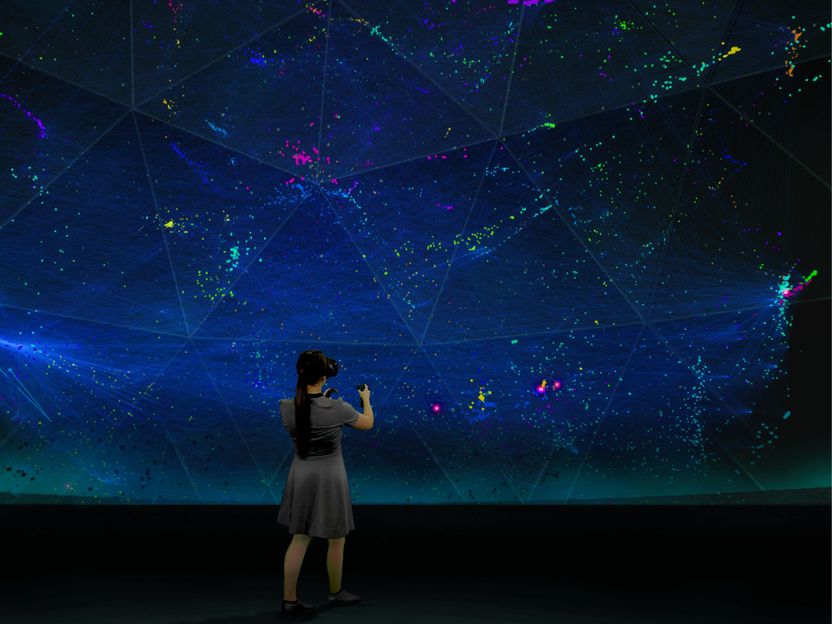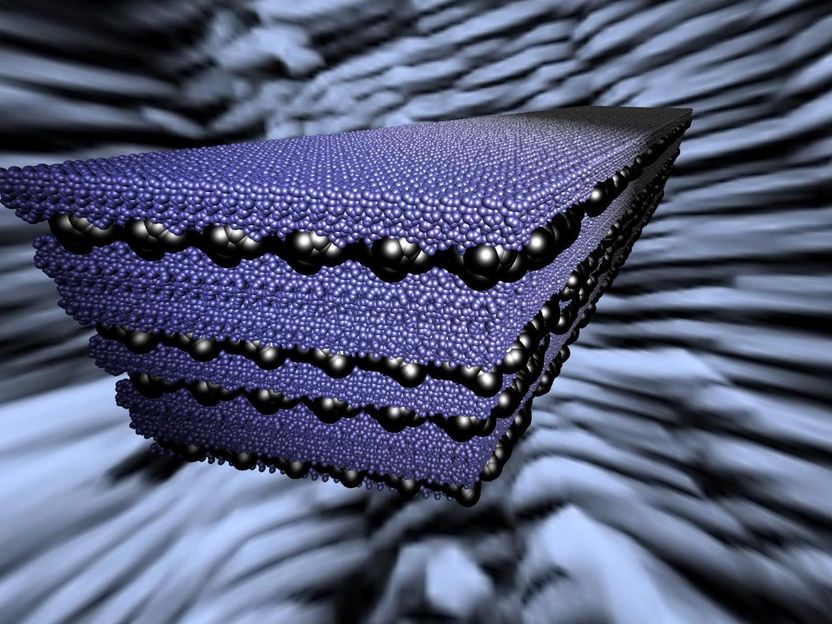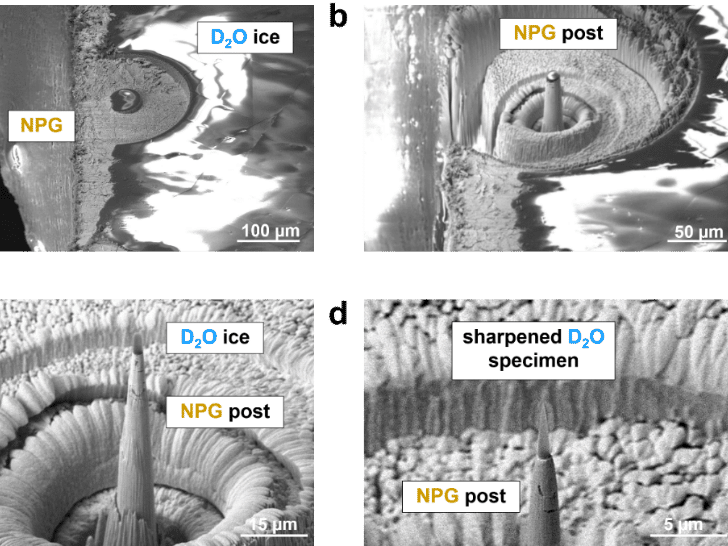The body as a network
A new VR platform enables the display of huge amounts of data. This can be helpful in the study of rare genetic defects, among other things
Networks offer a powerful way to visualize and analyze complex systems. However, depending on the size and complexity of the network, many visualizations are limited. protein interactions in the human body constitute such a complex system that can hardly be visualized. Jörg Menche, Adjunct Principal Investigator at the CeMM Research Center for Molecular Medicine of the Austrian Academy of Sciences, Professor at the University of Vienna and research group leader at Max Perutz Labs (Uni Wien/MedUni), and his team developed an immersive virtual reality (VR) platform that solves this problem. With the help of VR visualization of protein interactions, it will be possible in the future to better recognize correlations and identify those genetic aberrations that are responsible for rare diseases.

©Sebastian Pirch, veröffentlicht in Nature Communications 2021
The larger and more complex networks are, the more difficult their visualization on the screen becomes. Conventional computer programs quickly reach their limits. This challenge was addressed by network scientist Jörg Menche and his research group at the CeMM Research Center for Molecular Medicine of the Austrian Academy of Sciences. They developed a VR platform for exploring huge amounts of data and their complex interplay in a uniquely intuitive fashion.
The body as a network
The representation of complex data can be particularly important in the search for the cause of rare diseases, because the human body, with its approximately 20,000 proteins that are encoded in the human genome and interact with each other, represents a huge complex network. Whether movement or digestion – at the molecular level, all biological processes are based on the interaction between proteins. If the protein interactions are illustrated in a network, a barely representable picture of about 18,000 dots – proteins – and about 300,000 lines between these dots will be created. Menche and his research group used the virtual reality (VR) platform they developed to make this image “readable” and, in collaboration with St. Anna Children’s Cancer Research, succeeded in making the entirety of protein interactions visible for the first time. This makes it possible to interactively explore the vast and complex network.
Approaching the cause of rare immune diseases
For their study, published in Nature Communications, first author Sebastian Pirch and Menche’s research group identified connection patterns between different protein complexes in the human body and linked them to their biological functions. In addition, the scientists used global databases to identify specific protein complexes associated with a particular disease. “While conventional forms of representation would look like a proverbial ‘hairball’, the 3-dimensional representation enables the precise analysis and observation of the different protein complexes and their interactions,” says study author Pirch. This can be particularly important in the identification of rare genetic defects and crucial for therapeutic measures. “On the one hand, our study represents an important proof of concept of our VR platform; on the other hand, it directly demonstrates the enormous potential of visualizing molecular networks,” says project leader Menche. “Especially in rare diseases, severe immune diseases, protein complexes associated with specific clinical symptoms can be analyzed in more detail to develop hypotheses about their respective pathobiological mechanisms. This facilitates the approach to disease causes and subsequently the search for targeted therapeutic measures.”
About the VR platform
The platform developed by Menche’s research group is designed for maximum flexibility and extensibility. Key features include the import of user-defined code for data analysis, easy integration of external databases, and a high degree of design freedom for arbitrary elements of user interfaces. The researchers were able to draw on technology normally used in the development of 3D computer games, such as the globally popular game Fortnite. By publishing the source code, the researchers hope to convince other developers of the potential of virtual reality for analyzing scientific data.























































